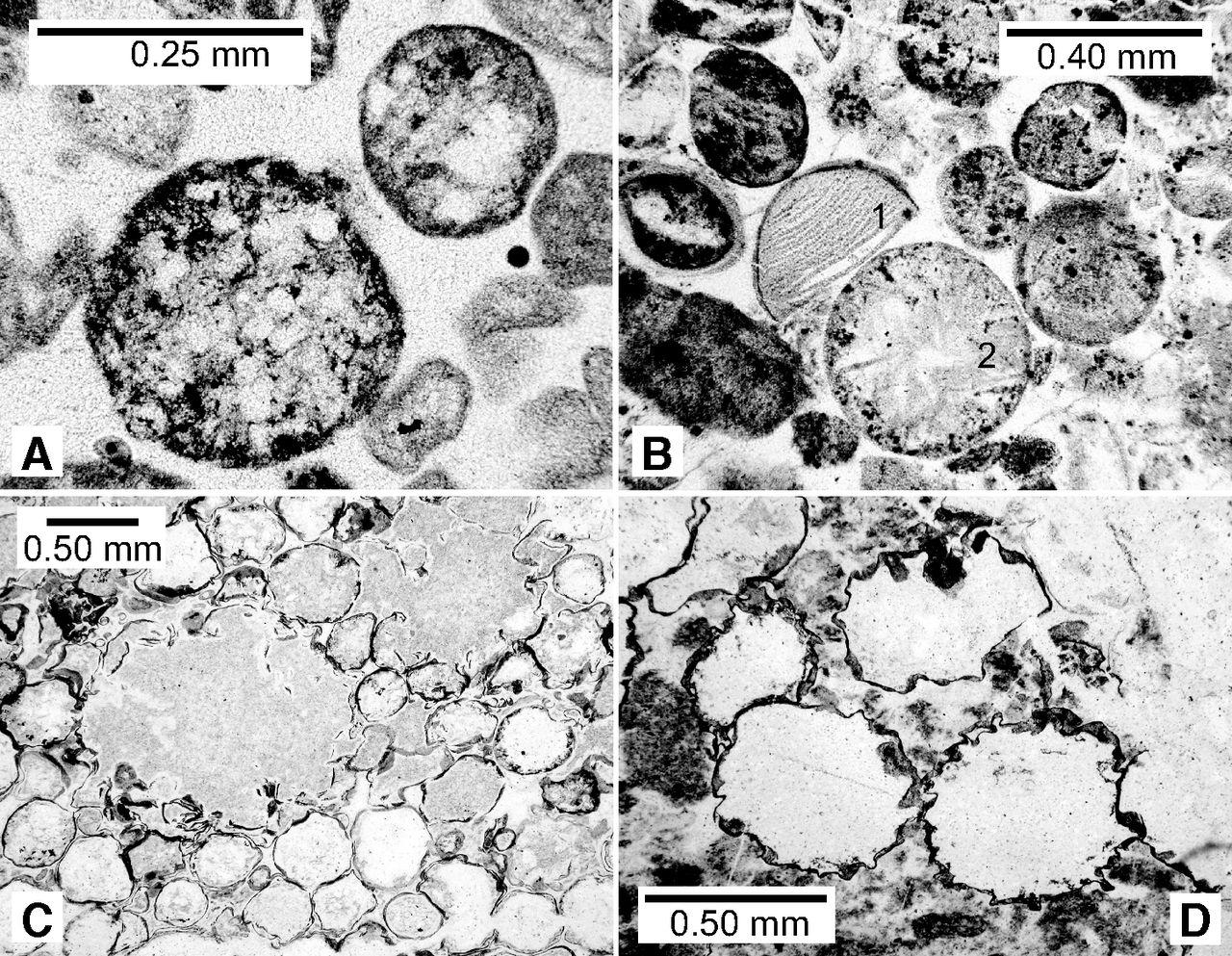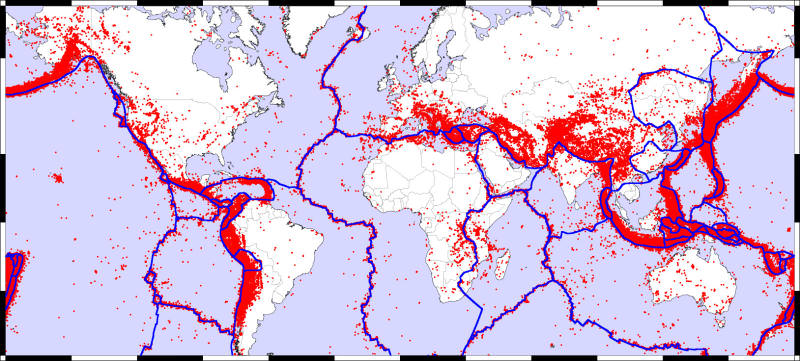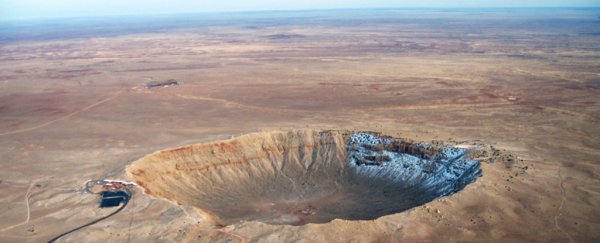Plate tectonics have played a vital role in the geological evolution of our planet. In addition, many scientists believe that Earth's geologic activity may have played an important role in the evolution of life – and could even be essential for a planet's habitability.
For this reason, scientists have long sought to determine how and when Earth's surface changed from molten, viscous rock to a solid crust that is constantly resurfacing.
Despite the best efforts of Earth scientists, this remains one of the biggest unanswered questions about our planet. According to a new study by a team of geologists from Australia and the US, it is possible that the transition was triggered by extraterrestrial objects impacting Earth's surface.
These results could have significant implications for the study of extrasolar planets and the search for life beyond Earth.
For the sake of their study, the international team considered looking beyond Earth for possible explanations of how tectonic activity began. As Craig O'Neill – the director of the Macquarie University Planetary Research Centre in Sydney, Australia and the lead author on the paper, said:
"We tend to think of the Earth as an isolated system, where only internal processes matter. Increasingly, though, we're seeing the effect of solar system dynamics on how the Earth behaves."
According to the most widely accepted theory of planet formation, the Earth formed roughly 4.6 billion years ago from material accreted from the Solar Nebula. Based on modeling studies and comparisons with lunar impacts, astronomers and geologists have theorized that Earth experienced a number of massive impacts for hundreds of millions of years afterward.
The most notable of these is believed to have taken place about 100 million years later and caused the formation of the Earth-Moon system (aka. the Giant Impact Hypothesis). Although these impacts tapered off over time, they left behind evidence in the form of spherule beds – round particles that formed from rock vaporizing and condensing.
 Spherules in the Barberton greenstone belt, Kaapvaal craton, South Africa. (Lowe et al., 2014)
Spherules in the Barberton greenstone belt, Kaapvaal craton, South Africa. (Lowe et al., 2014)
For the sake of their study, the team considered the distinctive layers of spherule beds that have been discovered in the Pilbara craton in Australia and the Kaapvaal craton in South Africa. These beds are the result of periods of intense bombardment from extraterrestrial objects that took place roughly 3.2 billion years ago – during the Archaean Epoch (ca. 4 to 2.5 billion years ago).
Interestingly, this is about the same time that the first evidence plate tectonics appears in the geological record. O'Neill and his colleagues decided to investigate this coincidence to see if there was a possible connection. As O'Neill explained:
"Modelling studies of the earliest Earth suggest that very large impacts – more than 300 km in diameter – could generate a significant thermal anomaly in the mantle."
Such impacts, according to O'Neill and his team, appears to have altered the mantle's buoyancy to the point that upwellings would occur that could directly drive plate tectonics. However, the sparse evidence that dates to the Archaean suggests that mostly smaller impacts measuring than less than 100 km (62 mi) in diameter occurred during this period.
To determine if impacts of this size were large and frequent enough to have initiated global tectonic activity, O'Neill and his team took a two-pronged approach. On the one hand, they used existing techniques to expand the impact record of the Middle Archaean (ca. 3.3 to 2.9 billion years ago).
Next, they developed numerical simulations to model the thermal effects that these impacts would have on Earth's lithosphere.
What they found was that during the Middle Archaean, 100 km-wide impactors would have been capable of weakening Earth's crust. Not surprising, since the Chixculub impact that caused the Cretaceous–Paleogene extinction (and killed off the dinosaurs), measured 70 km (43.5 mi).
Assuming that Earth's exterior was already primed for subduction, O'Neill and his team concluded such an impact would have been sufficient.
Had the Earth's lithosphere been a uniform thickness at the time, according to O'Neill, the impact would have had little effect. But during the Middle Archean, cooling had caused Earth's mantle to become thicker in some spots and thinner in others.
If an impact were to take place in a thin spot, it could add to the buoyancy differences already caused by the thickening and thinning process and trigger tectonic activity. Said O'Neill:
"Our work shows there is a physical link between impact history and tectonic response at around the time when plate tectonics was suggested to have started. Processes that are fairly marginal today – such as impacting, or, to a lesser extent, volcanism, actively drove tectonic systems on the early Earth. By examining the implications of these processes, we can start exploring how the modern habitable Earth came to be."
 Earth's tectonic fault lines (blue) and zones of volcanic activity (red). (zmescience.com)
Earth's tectonic fault lines (blue) and zones of volcanic activity (red). (zmescience.com)
These results could have far-reaching implications for Earth sciences and the study of extrasolar planets.
On Earth, a lot of significant developments have been traced to the Middle Archaean, including the rise of photosynthetic organisms and the earliest oxygen gas in our atmosphere. Understanding ancient impacts and how they affected terrestrial evolution can therefore help us to learn more about the origins of life on Earth.
Similarly, understanding how geological activity began on Earth could help us locate potentially-habitable planets.
So far, the vast majority of terrestrial exoplanets that have been discovered were found to be "stagnant lid planets", where no plate activity takes place. If the difference between habitable and uninhabitable is an impact that can trigger plate activity, that could help narrow the search!
The study, titled "The role of impacts on Archaean tectonics", recently appeared in the scientific journal Geology.
This article was originally published by Universe Today. Read the original article.
